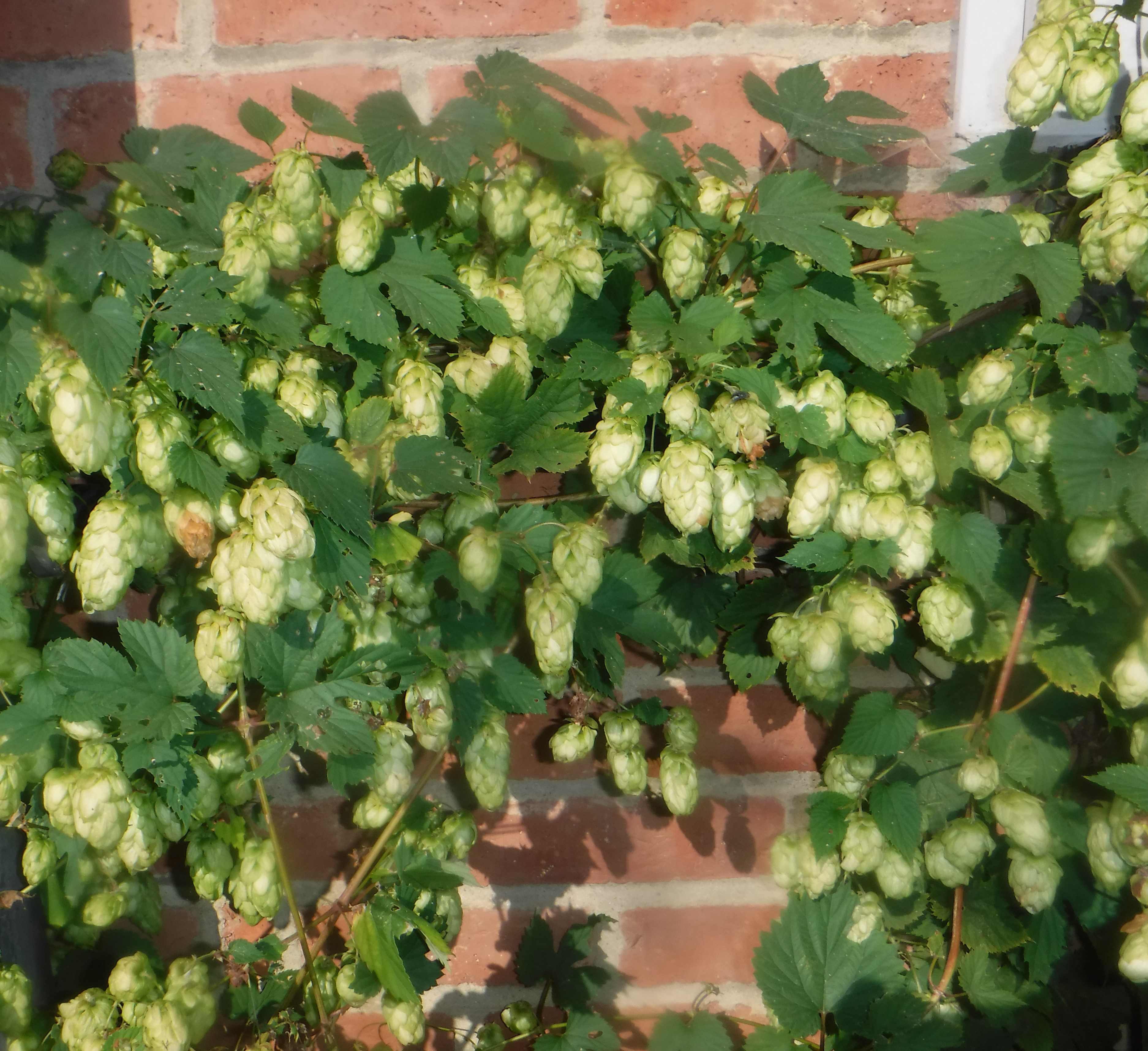
Total monthly rainfall: 24.5 millimetres. Maximum daily rainfall: 10.5 millimetres (29th September).
There were 6 days when measurable rain fell, and 14 days when cloud-cover was 100% for at least part of the day.
Maximum temperature on the warmest day was 28C on September 8th. Maximum temperature on the coldest day was 15C on September 30th. There were 24 days when the maximum temperature was 20C or above.
By September we are running out of new wildflower first-sightings. With 64 wildflower species already seen, we can only add an unusual white willowherb – discovered on our property for the first time on September 5th.
Ripe fruits on shrubs began with sloes on September 2nd; guelder rose, elder buckthorn, honeysuckle, and hawthorn berries on the 3rd; and dog rose hips on the 4th. We photographed ripe hops on the 16th.
-
 Elephant hawk moth
Elephant hawk moth
Elephant hawk moth
Elephant hawk moth
-
 Lack of autumn colours
Lack of autumn colours
Lack of autumn colours
Lack of autumn colours
-
 Ripe hops
Ripe hops
Ripe hops
Ripe hops
-
 Silk cocoon with caterpillar
Silk cocoon with caterpillar
Silk cocoon with caterpillar
Silk cocoon with caterpillar
https://www.kentfieldclub.org.uk/news/little-barton-farm-wildlife-notes/nature-notes-september-2021#sigProId5e7151078f
The final butterfly first-sighting was of a clouded yellow on knapweed (September 26th), bringing our annual total to 25 species.
There were 2 additional moth-related species during the month. On the 15th we spotted the first of six unidentified pale yellow moth-related silky cocoons (seen here for the first time last year, and being investigated further afield). One cocoon had a caterpillar attached. On the 18th, we were lucky to see an elephant hawk moth caterpillar – bringing our annual total so far to 26 (much lower than in previous years).
We have no dragonflies to add to the 20 species seen this year, but during September we have lost
the banded demoiselle (4th Sept), red-eyed damselfly (6th Sept), blue-tailed damselfly (19th Sept), white-legged damselfly (24th Sept), and southern hawker (28th Sept).
The other insect seen was a devil’s coach horse on the 10th.
Wild bird activity included 40 +goldfinches feeding on knapweed on the 2nd and 9th; a buzzard flying above our fields on the 5th; a murmuration of between 130 and 200 starlings on an oak tree and electricity cables from the 8th onwards; 40 plus house martins on the 9th, and the last 5 swallows above the lake on the 13th; a sighting of a kingfisher on the 21st; and a kestrel hovering above the fields on the 27th. There was also the occasional visit from a small number of Canada geese and almost daily visits by a grey heron
Additional creatures seen this month were a common toad and great crested newt (1st Sept), and a pigmy shrew (19th Sept) under reptile shelters, plus a wasp spider cocoon without the wasp spider among marginal lakeside plants (Sept 11th).
Progress towards autumn colours has been particularly slow this September, with only the hornbeam leaves beginning to show a yellow tinge by the 28th.


